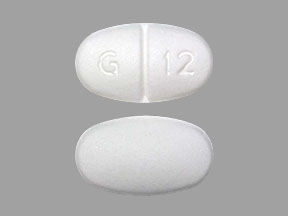How to Choose the Right Brand of Metformin?
- admin
- June 30, 2025
- 5:33 am
- No Comments

Choosing the right brand of Metformin is not as simple as picking up a bottle at the pharmacy and heading home.
With dozens of generic formulations, extended-release options, and brand-name versions floating in the market, patients with type 2 diabetes often feel lost in a maze of choices.
Some people worry about side effects, while others wonder why two different pills with the same dosage give entirely different results. That confusion is valid—and that is exactly what this guide aims to fix.
In this article, Best Dietary Supplement for Diabetics research team shall explore how to choose the best Metformin brand through a step-by-step approach.
We shall break down differences in formulation, compare generics and brand names, decode what side effects mean, and even peek into the latest trends in 2025.
All of this is based on data from high-authority medical research studies, real-world patient experiences, and recommendations from trusted diabetes experts.
Points Covered in this Article:
- How to Choose Metformin Extended Release Brand
- Best Metformin Generic Brands Comparison
- Metformin Brand vs Generic Quality Differences
- Extended Release Metformin Brand Recommendations
- What Brand of Metformin Has Least Side Effects
- Top Rated Metformin ER Brands 2025
- Patient Guide to Choosing Metformin Brand
- Conclusion: Making the Right Choice for Your Diabetes Management
How to Choose Metformin Extended Release Brand?
If your doctor has recommended Metformin Extended Release (ER), you’ve already made a patient-friendly choice.
ER versions are often better tolerated than immediate-release forms, especially when it comes to gastrointestinal side effects. But not all ER brands are created equal.
For example, Glucophage XR, Fortamet, and Glumetza are three popular branded ER versions—each with its own delivery technology and absorption characteristics.
As per GoodRx and the Mayo Clinic, Glucophage XR uses a diffusion system, Fortamet employs single-composition osmotic technology, and Glumetza uses a gastric-retentive polymer matrix.
While all of these have the same active ingredient—Metformin—they release it differently over time. That means one brand may work wonders for one person and cause side effects in another.
You also want to consider timing; most Extended Release Metformin forms are taken once daily with dinner, which improves convenience and compliance. The first step in choosing your ER brand is understanding which system works best with your lifestyle and digestion.
It might take some trial and error, but with guidance from your provider, you shall find the right fit.
Best Metformin Generic Brands Comparison
Generic Metformin is widely available and significantly more affordable than brand-name options.
But here is the catch: generics can vary slightly in their inactive ingredients, manufacturing quality, and bioavailability.
As per the U.S. Food and Drug Administration (FDA), generics must be bioequivalent to the original brand, meaning they deliver the same therapeutic benefit.
However, small variations in absorption rates or inactive fillers can affect how your body responds to one generic versus another.
A 2019 study published in the Research Journal of Pharmacy and Technology compared multiple generic Metformin tablets and found notable differences in tablet hardness, friability, and dissolution rates—factors that can influence tolerability and onset of action.
Among the most recommended generics are those manufactured by reputable companies such as Teva, Sandoz, Aurobindo, and Lupin. These brands consistently meet FDA standards and are less likely to be affected by recalls.
Always ask your pharmacist which manufacturer they are dispensing. If you notice side effects after switching pharmacies or brands, check the label for the manufacturer’s name.
Consistency matters, especially with a drug like Metformin that requires stable blood concentration to do its job effectively.
Metformin Brand vs Generic Quality Differences
Despite having the same active ingredient, brand-name and generic Metformin products can perform differently in your body. The difference does not lie in the medicine itself, but in how it is packaged and delivered.
Factors such as tablet coating, binders, and extended-release mechanisms can affect how fast and how much Metformin is released into your system. In some countries, regulatory oversight may not be as strict, which can result in generics that fall short on consistency.
A clinical trial published in the Iranian Journal of Basic Medical Sciences in 2017 highlighted that although most generics are therapeutically effective, a few underperforming brands showed delayed drug release, which could compromise glucose control.
Patients with sensitive stomachs may react differently to excipients—those “other ingredients” used to bulk up the pill or aid absorption.
If you are switching from a brand to a generic (or vice versa) and notice changes in your glucose readings or digestive symptoms, do not ignore it. You might want to start combination metformin therapy to reap speedy results.
Track your symptoms and speak to your doctor or pharmacist. Remember, both cost and clinical effectiveness matter—but not at the expense of stability and comfort.

Extended Release Metformin Brand Recommendations
When it comes to extended-release Metformin, not all brands are created equal—at least not in how they behave inside your digestive system.
Brands like Glumetza, Fortamet, and the now-discontinued Glucophage XR were designed to reduce gastrointestinal irritation while maintaining a steady release of medication over several hours.
Glumetza, for instance, uses a polymer matrix that allows the pill to float in the stomach and slowly dissolve over 8–10 hours. Fortamet, on the other hand, uses osmotic pressure to push the drug out through a tiny hole in the tablet.
A 2021 review published in the Journal of Clinical Diabetes and Endocrinology suggests that Glumetza shows fewer incidents of diarrhea and stomach cramps compared to traditional IR or even some ER forms.
However, it is significantly more expensive unless covered by insurance. Fortamet strikes a middle ground between cost and tolerability, making it a good option for many patients.
Your choice should depend on your body’s response, your insurer’s formulary, and what side effects you’re willing to tolerate. Some patients experiment with a few brands before settling on the one that keeps their A1C in check without wreaking havoc on their gut.
What Brand of Metformin Has Least Side Effects
This is one of the most common questions among Metformin users: which brand causes the least nausea, bloating, or bathroom sprints?
The answer often depends on your digestive system, your dosing schedule, and the type of formulation you take.
Most diabetics believe that liquid metformin is best for type 2 diabetes treatment but there is no scientific data to back this claim.
However, multiple studies and surveys, including a patient-reported outcome study from the National Center for Biotechnology Information (NCBI), point to Glumetza and DR (Delayed Release) Metformin as being the gentlest on the stomach.
In a head-to-head trial, Glumetza had a lower rate of GI complaints compared to generic IR formulations.
The reason lies in its delayed gastric release, which allows the drug to bypass the upper intestines where most side effects are triggered. If Glumetza is too pricey, switching to a high-quality ER generic from a reliable manufacturer is the next best bet.
Another way to reduce side effects, regardless of the brand, is to start with a low dose (e.g., 500 mg) and increase gradually.
Always take the medication with meals, preferably dinner, and avoid crushing or splitting extended-release tablets.
If you are still facing issues, consult your doctor to reassess the formulation or consider combination therapy with other glucose-lowering agents.
Top Rated Metformin ER Brands 2025
As of 2025, the most top-rated Metformin ER brands based on user reviews, efficacy data, and cost-effectiveness are Glumetza, Fortamet, and high-quality generics from Teva and Aurobindo.
While Glucophage XR was once the gold standard, it has been largely phased out in favor of newer or more affordable options.
According to a consumer review published by Drugs.com, Glumetza holds the highest patient satisfaction score, mainly due to its low incidence of side effects.
Insurance coverage and availability can influence these ratings. Glumetza, for instance, is often marked as a Tier 2 drug, making it more expensive without prior authorization.
Fortamet is a close second, offering a reasonable balance between cost, dosing simplicity, and GI tolerability. Some patients also report positive experiences with ER generics from Ascend and Heritage Pharmaceuticals.
If you are starting Metformin in 2025, these are the names to look out for.
Speak with your provider and check your pharmacy’s stock to ensure that you’re getting one of these trusted options.
Switching between brands may be necessary, so keep track of any changes in side effects or blood sugar control after making the switch.
Patient Guide to Choosing Metformin Brand
Choosing the right brand of Metformin is not just a clinical decision—it is a lifestyle choice too. Your body’s sensitivity, your insurance coverage, and even your work schedule all play a role.
Start by having an open conversation with your healthcare provider. Discuss your prior experiences with medications, including any history of side effects. If you are new to Metformin, you may want to begin with an extended-release version to minimize discomfort.
Next, visit a pharmacy you trust. Ask the pharmacist about the specific brand or manufacturer they dispense. If you are switching pharmacies, be aware that the manufacturer may change.
For patients in the U.S., you can also request a specific manufacturer if it works better for you. Apps like GoodRx or WellRx can help you compare pricing across local pharmacies.
Most importantly, listen to your body. Track how you feel after switching brands and report any new symptoms to your provider.
If one brand does not work for you, there are plenty of others to try. Try and stick with generic metformin in order to be safe.
With a little diligence and communication, you can find the Metformin brand that makes managing your diabetes just a little bit easier.

Takeaway: Making the Right Choice for Your Diabetes Management
Metformin remains the first-line therapy for type 2 diabetes—and for good reason. But not all brands deliver the same experience, even if the active ingredient is identical.
From Glumetza’s delayed-release benefits to Teva’s reliable generics, your options are wide and varied.
Choosing the right one involves a bit of trial, a lot of error-checking, and honest communication with your healthcare team.
Start slow, monitor your body’s response, and do not settle for a brand that does not sit well with you.
Whether it is minimizing side effects, ensuring stable blood sugar control, or simply affording your monthly refill, the “best” Metformin brand is the one that meets your personal health goals.
Keep the conversation open with your provider, stay updated with regulatory alerts, and don’t hesitate to switch if needed.
Choosing smart is choosing healthy—and now, you have got the roadmap to do just that.
References: